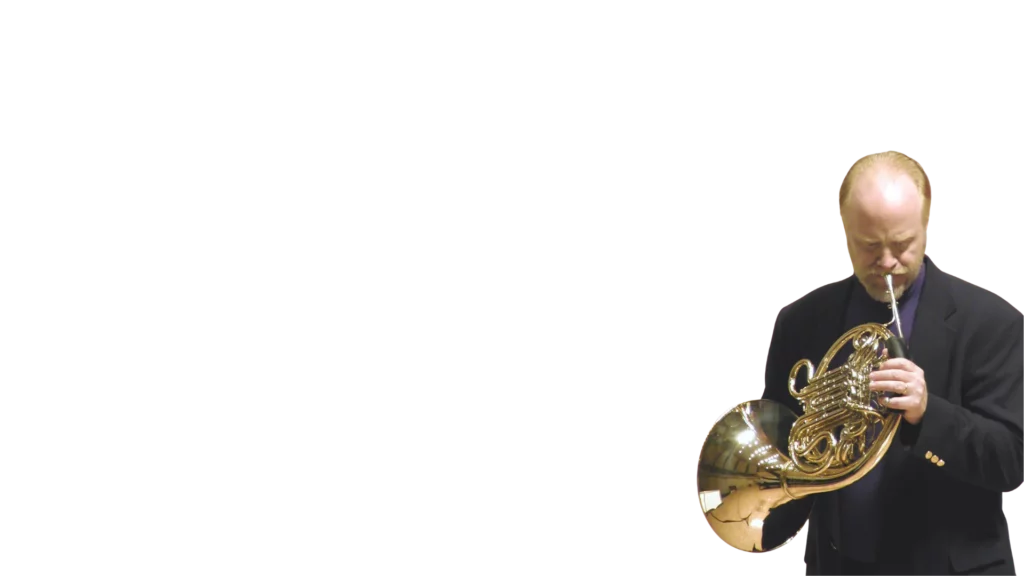Traditional classical horn repertoire centers around horn and piano, so that if you want to give a recital, your choices are either 1) find a pianist who is willing and able to put in the rehearsal time and then time on the road and 2) find funding to pay for this pianist. This audio accompaniment recording was made last year as a first step in a longer-range project to build a library of various audio accompaniments to use in concerts, especially when traveling.
The recording was assembled in layers in the popular program GarageBand. There are many different kinds of sounds here, but the central sound that permeates the entire recording is the “sound of interstellar space”. Voyager 1, which was launched (along with its twin Voyager 2) in 1977 with the purpose of exploring interstellar space. In August 2012, Voyager 1 finally entered that region between the stars. Both spacecraft are still going, still sending back information from Deep Space.
Among the eleven instruments on board Voyager is a Plasma Wave Instrument. In charge of it, incidentally, is Dr. Don Gurnett, the James Van Allen professor of physics at the University of Iowa. The plasma wave instrument does not detect sound – there is, of course, no sound in outer space since there is no atmosphere. It does, however, record the waves of electrons in the ionized gas (= plasma) in space through which Voyager travels. Since the frequencies of these waves occur at audio frequencies, they can be played through a loudspeaker. The “interstellar plasma music” is triggered by bursts of solar activity, which take a year to reach Voyager from the sun through space. Voyager can register these plasma waves and translate them into sounds that we can hear. NASA released the sounds into the public domain (we can hear them directly on a UI Physics Department web site: http://www-pw.physics.uiowa.edu/space-audio/
Professor Gurnett’s favorites include “Earth Whistlers”, “Earth Chorus”, “Jupiter bow shock crossing”, and more.
Thus: the sounds of space are mixed with a variety of bass, percussion, and other sounds, including whale calls to produce a unique accompaniment for the horn to solo over. The horn part is not synched to any particular part of the recorded part; the horn is free to use the printed part as a rough road map, but the hornist is free to change any part of it, loop parts of it, or completely make up your own line (suggestion: try various kinds of C minor: natural minor, harmonic minor, melodic minor, Dorian mode, blues scale). As written, it is roughly in an ABAC form – beginning, middle, recap, coda. To start, let the recording run for a little while, then come in. Time your ending to be about 1-2 before the recording ending, which has a very long fade-out.
